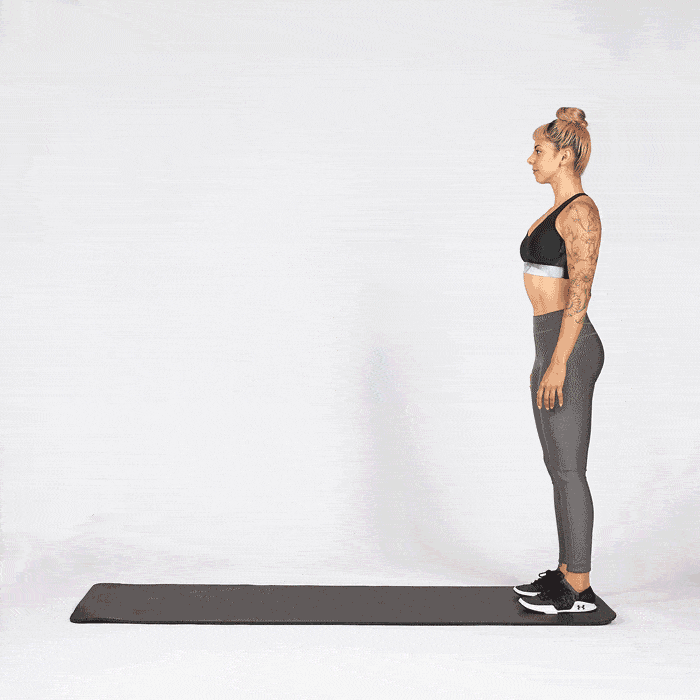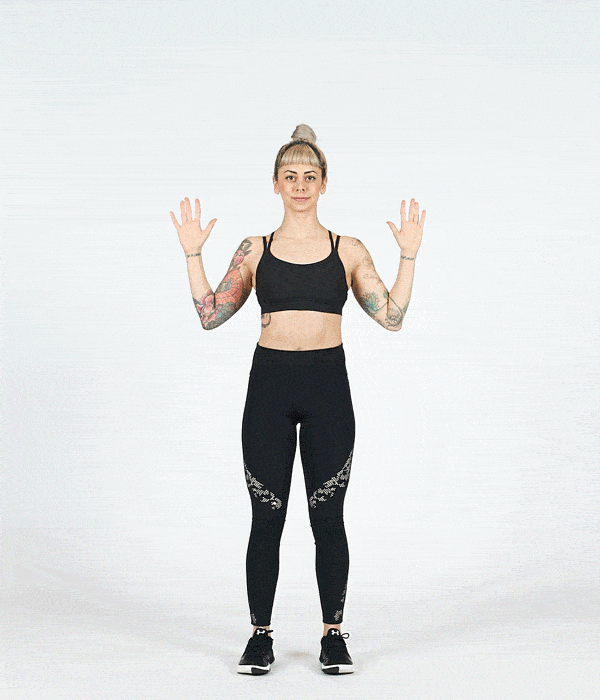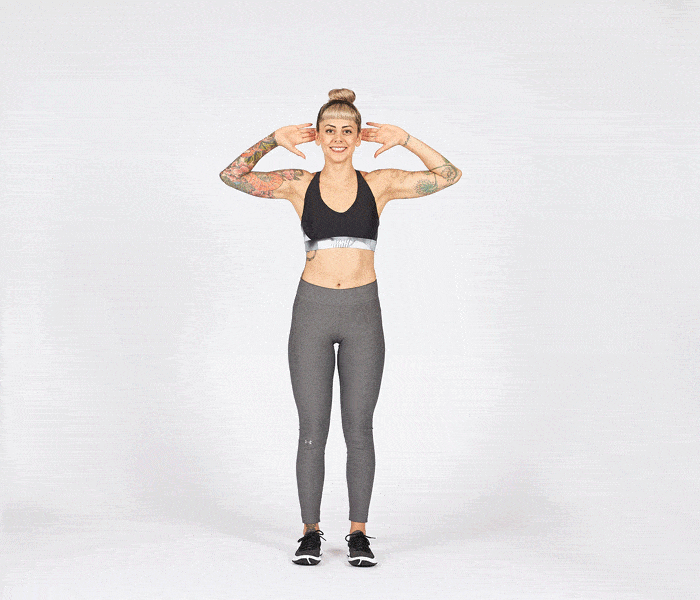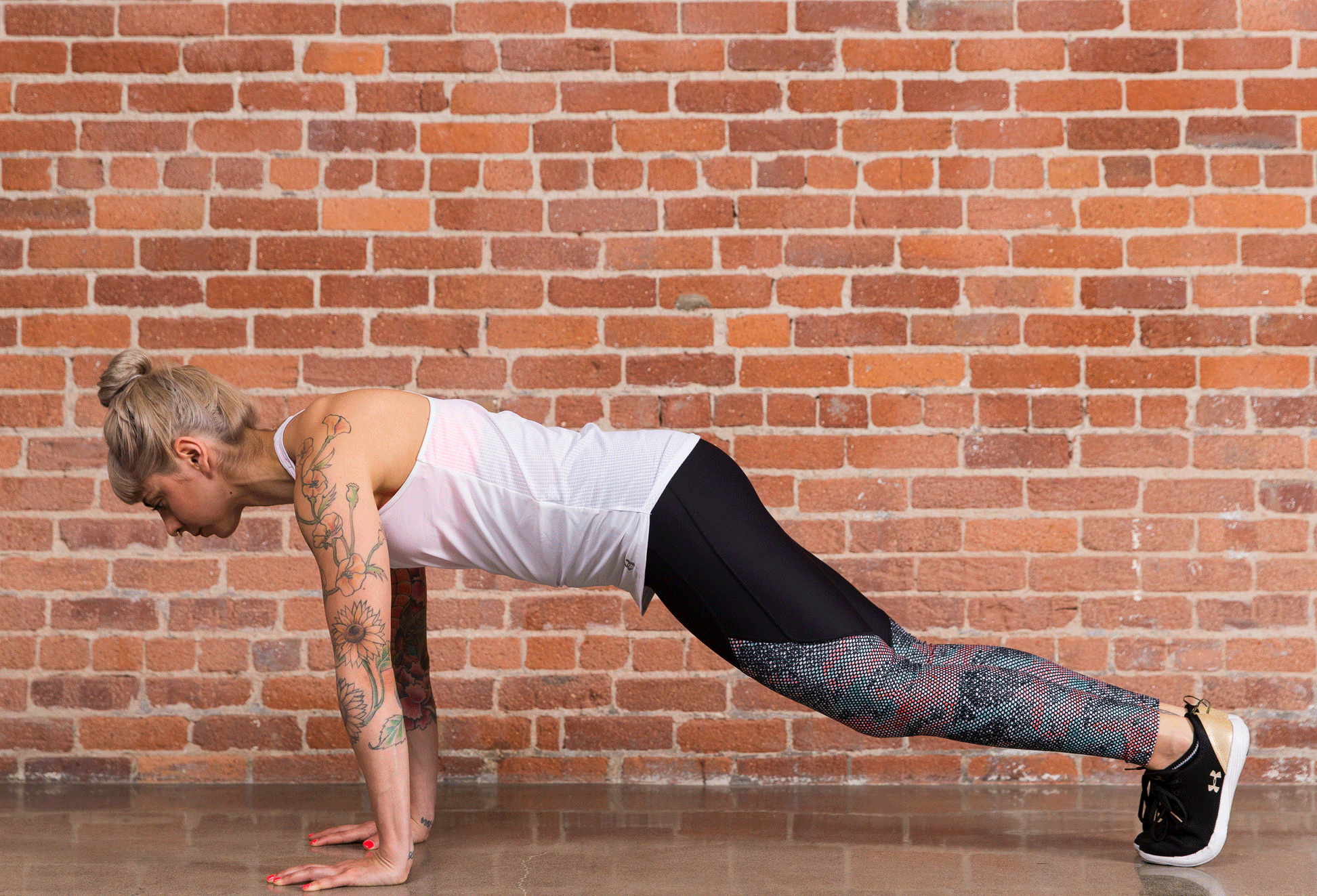To many, especially the overly time-strapped among us, a warmup is a luxury we think we can “get away with” skipping. However, warming up the body is important not only for better performance but also for injury prevention.
Jumping into a workout without warming up might not have any consequences for days, months or even years. Eventually, though, it’ll catch up to you in the form of a bad workout or injury.
There’s no need to go overboard with your warmup, either. A quick, five-exercise warmup should be enough for most people. Rather than focusing on stretching one muscle at a time, use dynamic exercises that incorporate more than one body part at a time. That way you’ll warm up faster and more efficiently.
There are a few types of warmup options: static stretching, foam rolling, dynamic stretching or a simple cardio warmup, like jogging on the treadmill. Whatever style of warmup you choose, make sure it covers the most critical element: increasing the temperature of your muscles to make them more elastic, which improves your range of motion.
THE BEST STYLE OF WARMUP
Warming up also jumpstarts your metabolism, which gets your body prepared for the workout ahead. Your heart beats faster and your muscles break down molecules like creatine and glycogen to contract.
Lying down and doing static stretches might improve your range of motion, but it doesn’t warm your body up very well. Your warmup should be active, because moving around and increasing your body temperature increases your flexibility as much as stretching, according to a 2018 study published in the Journal of Strength and Conditioning Research. If you don’t have access to a cardio machine, try dynamic stretching.
Dynamic stretching is stretching while moving. Butt kicks or walking lunges are examples of dynamic stretches. The point is to do an exercise that requires enough range of motion to push you out of your comfort zone, then quickly move out of it and continue with the exercise. It helps you warm your body up and simultaneously stretch.
YOUR IDEAL WARMUP ROUTINE
You can use this warmup before you lift weights, take a group exercise class or go for a jog. Perform each exercise for 1 minute, bringing the warmup to a grand total of 5 minutes in length. If you need to, you can shorten it to 30 seconds per exercise.
WALKOUT TO DOWNWARD DOG

Noam Tamir, certified strength and conditioning specialist and owner of TS Fitness in NYC, likes this exercise because it combines a hamstring and shoulder stretch with core activation. The downward dog loosens your shoulders and hamstrings, while the walkout engages your core and works your arms.
The move: Start standing, then stick your hips back without bending your knees. Lean over and plant your hands on the ground. Walk your hands out slowly until you’re in a pushup position. Lift your hips up and push into the ground with your arms so your body is in the shape of an inverted “V.” Keep your elbows straight and gently press your heels toward the ground. You can press one heel down at a time to stretch out one calf muscle at a time. If this stretch is too much for your hamstrings, you can bend your knees slightly. After you feel the stretch, return to pushup position and walk your hands back up to standing.
WORLD’S GREATEST STRETCH

The name sounds boastful, but this stretch has a few exercises built in that stretch your back, hips and hamstrings.
The move: Start standing, then take a big step forward with your left foot. Put your hands on the ground inside your left foot. Keep your back knee off the ground. Lift your left hand and rotate to the left, reaching up toward the ceiling. Then, bring your hand back down, drop your back knee to the ground, straighten your left knee and lean forward to stretch your hamstring. Stand back up and repeat on the other side.
WALL SLIDES

Many jobs require sitting and hunching over a desk or computer screen. That means most people have tight chest muscles that need to be stretched.
The move: To stretch your chest, stand with your back against a wall and feet a foot from the wall. Bend your knees and sink down a few inches. Your butt, upper back and head should be against the wall. Raise your arms up and pin them back against the wall with your elbows bent at 90-degrees. Your elbows and knuckles should stay pressed against the wall throughout the exercise. Reach your hands up toward the ceiling as high as you can while exhaling through your mouth. If your knuckles or elbows come off the wall, pull your arms back down and start again.
ALTERNATING LATERAL LUNGES

This movement might seem unique, because most exercises in the gym are linear, meaning you go straight forward and back. Lateral lunges help you lengthen your adductors, which are your inner-thigh muscles and warm up your glutes.
The move: Stand with your hands behind your head, elbows pointed straight out to the sides and chest open. Take a big step out to the right but keep both feet pointed forward. Lean toward your right leg and stick your butt back as far as you can. Your left leg should be straight. Then, step your right foot back up to your left and step out to your left side, repeating the exercise.
MOUNTAIN CLIMBERS

This is a low-impact exercise that warms up your arms, legs and core muscles. You can also use it as a cardio exercise in your warmup.
The move: Start in a pushup position with your hands under your shoulders. Bend one leg and bring your knee up under your hip. Then, switch legs with a jumping step so that only one foot touches the ground at a time. Continue switching legs as fast as you can and take a break when needed.




